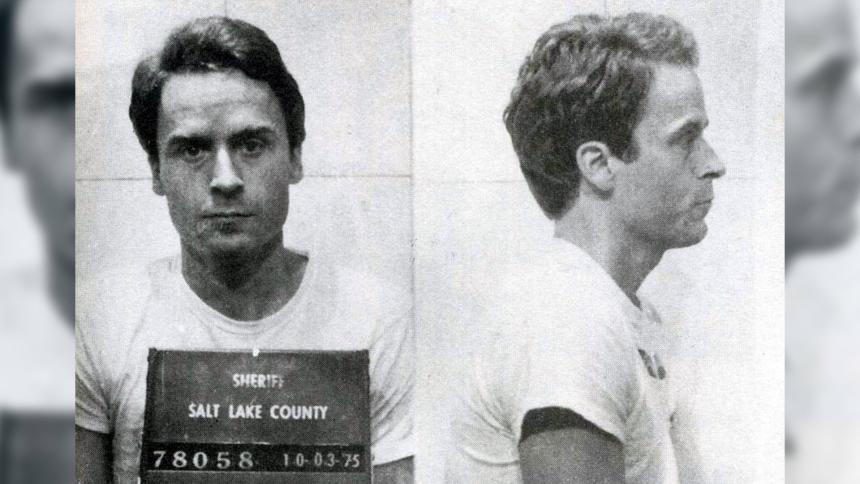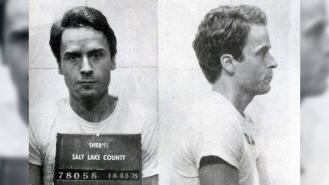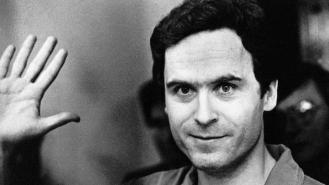
How Ted Bundy escaped from custody…twice!
Charming, handsome, charismatic, personable…these are just a few words used to describe one of the most prolific serial killers the world has ever known. Theodore Robert Bundy, aka Ted Bundy, exploited these personality traits to his advantage and over a four-year spree between 1974-1978 he raped, assaulted and murdered over 30 women across multiple States in America, although it is widely believed amongst those who were directly involved with Bundy that he in fact killed over 100 women.
His ability to evade the law as well as his uncanny knack of escaping even when the law had caught up with him, allowed Bundy extra time to indulge in his murderous fantasies.
Ted Bundy’s first escape
Bundy had already murdered multiple women by the time his now infamous VW Beatle was pulled over by a policeman on 16 August 1975, for acting suspiciously in a residential area in the early hours. In Bundy’s car, the officer found a crowbar, handcuffs, a ski mask and pantyhose with eyeholes cut in it. At first, it was assumed these were items used for burglary but investigators soon linked Bundy to an attempted kidnapping that had occurred almost a year prior. In November 1974, Bundy had posed as a police officer to gain the trust of 18-year-old Carol DaRonch. Once in his car he tried but failed to handcuff DaRonch to the vehicle. Instead, she fled and reported the incident to the police.
With Bundy now in police custody, investigators asked DaRonch if she could pick him out of a line-up…she did. Authorities believed they had enough evidence to charge Bundy with her kidnapping. On June 30 1976, Bundy was found guilty of her assault and sentenced to between one-fifteen years in a Utah State prison. By that time, authorities from Colorado had also managed to link Bundy to the murder of 23-year-old Caryn Campbell, whose body had been found next to a dirt road by a Colorado ski resort in early 1975. After charging Bundy with her murder, he was transferred from Utah to Garfield County jail in Glenwood Springs, Colorado, where we would await trial.
Bundy, a former law student, chose to represent himself in court. The judge residing on his trial decided to excuse Bundy from wearing handcuffs and leg shackles and had allowed him the opportunity to visit the courthouse law library so that he could research his case. These privileges granted to Bundy would later come under fire as the accused would take advantage of them to conduct his first escape.
On 7 June 1977, whilst taking a break from court during a preliminary hearing, Bundy spotted an open window in the library and decided to act. He would later describe the moment during a phone call with prison psychologist Dr. Al Carlisle saying, ‘The guard went outside for a smoke. The windows are open, and the fresh air is blowing through. And the sky was blue, and I said, 'I'm ready to go,' and walked to the window and jumped out. Honest to god, I just got sick and tired of being locked up.’
Jumping some 30 feet, Bundy hit the ground hard and sprained his ankle. With no plan, no backup and no money, Bundy shed a layer of clothing and then limped his way towards nearby Aspen Mountain. Ten minutes after his escape authorities caught on and began setting up roadblock across town and placed all citizens on high alert.
Bundy hiked up the mountain and broke into a hunting cabin, stealing supplies and a rifle and headed off again. Bundy ended up wandering around the forest for days after becoming lost and disorientated. He finally trekked down the mountain and returned to Aspen in the hope of stealing a car. Sleep-deprived and in pain from his ankle, when Bundy did manage to steal a car he drove it so erratically that it quickly caught the attention of police officers who pulled him over. Bundy was back in custody after 6 days on the run. Although his taste of freedom was short-lived, it wasn’t to be his last.
Ted Bundy’s second escape
Bundy was stripped of all his previous privileges and was now back at Garfield County jail. He wasted little time though in planning his next escape. Realising that his last attempt failed through lack of planning he began stashing away money, acquiring around $500 cash over the next six months, most of which was smuggled in by his later wife Carole Ann Boone. Bundy also managed to secure a floor plan of the jail and a hacksaw from fellow inmates.
In his cell was an unsecured grate in the ceiling. Bundy planned on cutting a hole around it and squeezing through the tiny one-foot square gap before making his way along the crawl spaces above to one of the jailer’s rooms. To fit into the tiny hole he was going to cut into the ceiling Bundy needed to lose weight.
By the 30 December, Bundy had lost some two and a half stone and was ready to put his plan into action. With most of the prison staff off on Christmas break, Bundy piled books onto his bed and covered them over with the blankets to make it look like he was sleeping underneath. He proceeded to make his way up through the grate and crawled towards a nearby jailer’s room. Once above, he broke through the ceiling and dropped down. The jailer was out for the evening, so Bundy grabbed some civilian clothes from the jailer’s closest, got changed, then walked out of the front door. Bundy was at large…again!
It would be some 17 hours before anyone realised he was missing, by that time Bundy had managed to steal a car, catch a flight and jump on a bus and make his way to Chicago, some 1,100 miles away. Nine days later, Bundy made his way to Tallahassee, Florida and although the FBI had added him to their Ten Most Wanted Fugitives list, he would remain a free man until mid-February 1978, a month and a half after escaping.
During his time on the run, Bundy would kill again and claim his final known victims. In the early hours of 15 January, he broke into a Florida State University sorority house. There he sexually assaulted, beat and strangled two young women, Margaret Bowman, 21, and Lisa Levy, 20. Two other women in the house were attacked and suffered severe injuries, although they would survive thanks to the car headlights of a girl returning to the house, which scared Bundy off.
Police estimated Bundy had been in the house for just 15 minutes and had carried out his attacks within earshot of over 30 witnesses, all of who heard nothing. That night Bundy went on to attack another young female student. She would live to tell the tale, albeit without her hearing after Bundy’s vicious assault left her permanently deaf.
On the morning of 8 February in a Jacksonville car park, Bundy attempted to gain 14-year-old Leslie Parmenter’s trust by telling her he was from the fire department. Bundy quickly retreated after her older brother stepped in and challenged him. The next day, some 60 miles away in Lake City, 12-year-old Kimberly Leach would not be so lucky. Leach was to become Bundy’s final victim, her body discovered seven weeks later in a pig shed, 35 miles away from Lake City.
Bundy was finally apprehended on 15 February 1978, stopped once again by police officers whilst driving. It seems that cars were Bundy’s unlucky charm. As soon as the license plate check came back declaring Bundy’s vehicle as stolen he attempted to flee the scene. He didn’t get far before an officer subdued him and placed him under arrest. Bundy was said to utter the words, ‘I wish you had killed me.’
Within two years Bundy would be tried and found guilty of murdering the two women in the sorority house as well the 12-year-old girl. He was sentenced to death by electrocution. On 24 January 1989, at the age of 42, and after years of successfully managing to delay his execution, Bundy was finally placed in an electric chair and had two thousand volts passed through his body.
At 7:16 a.m. Theodore Bundy was pronounced dead as crowds outside the death chamber cheered ‘Burn, Bundy, burn!’










